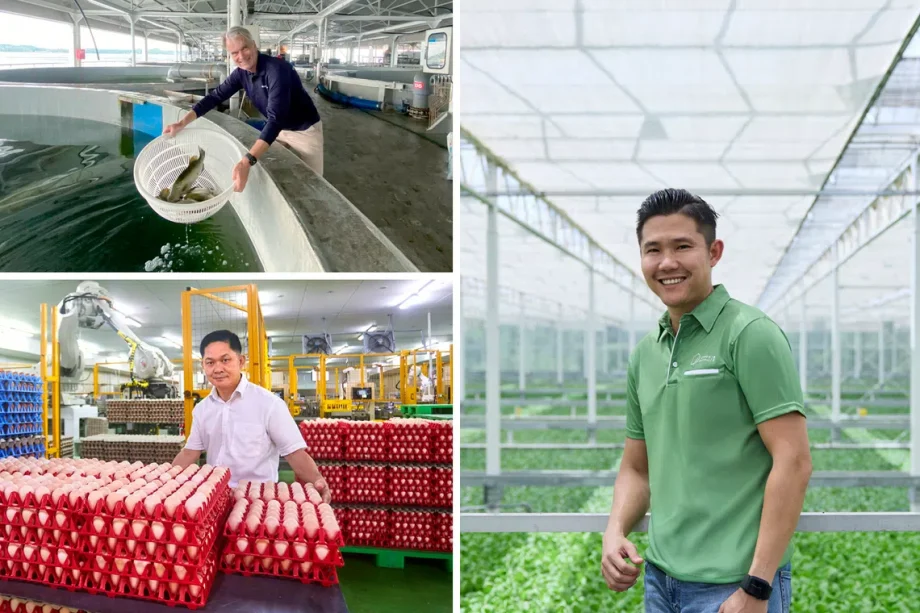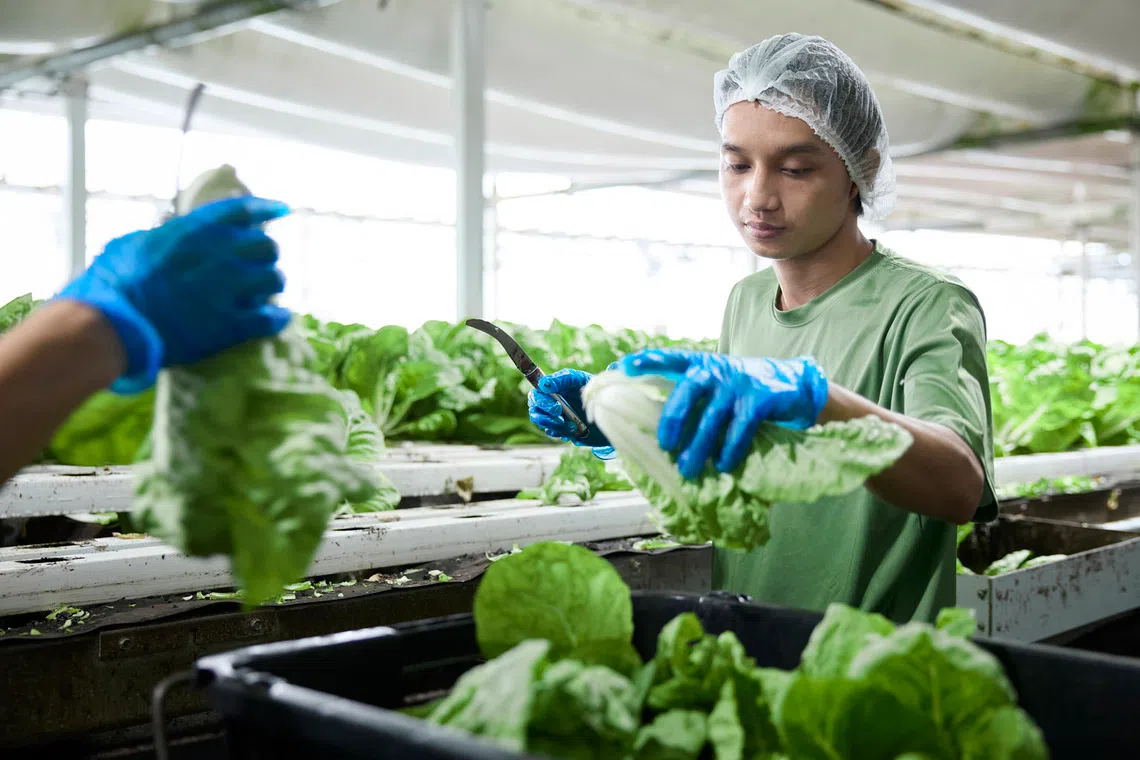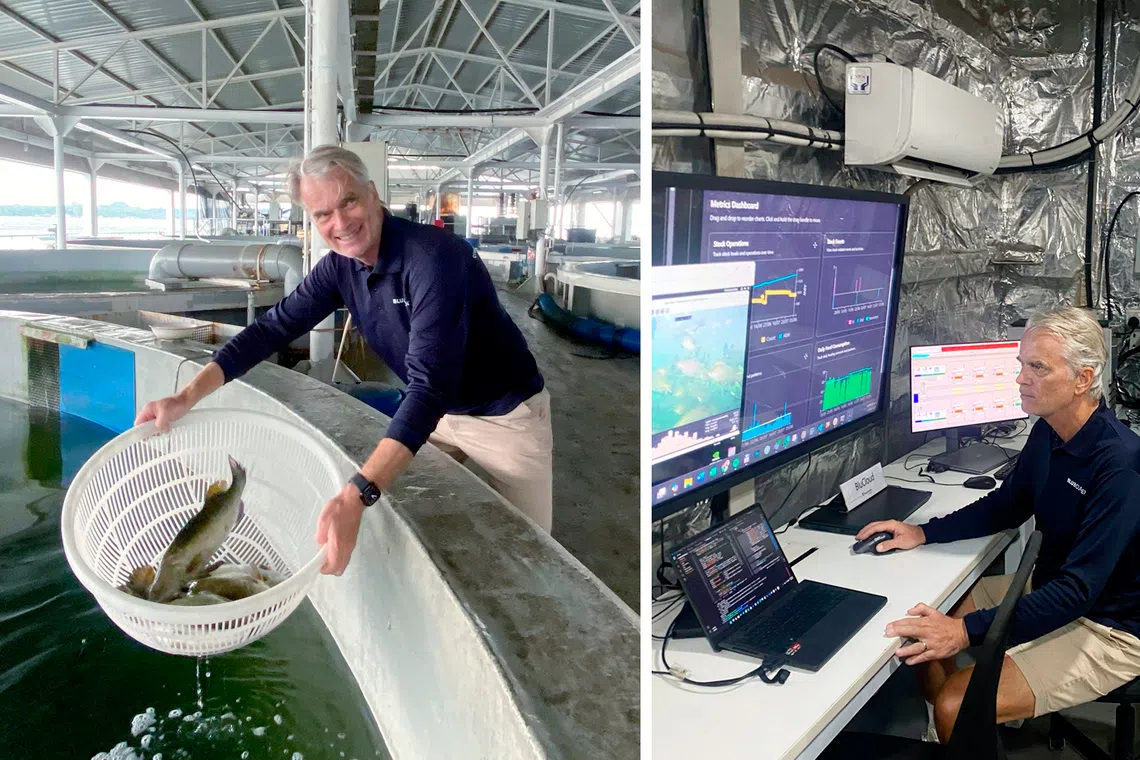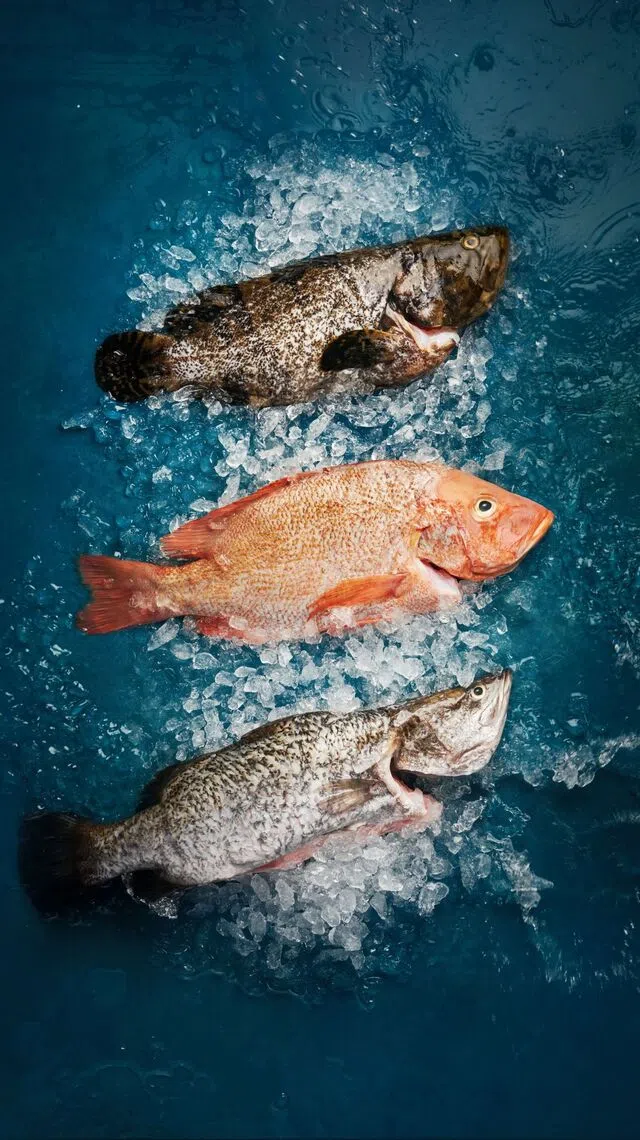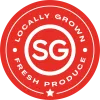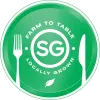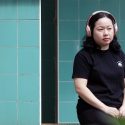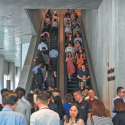N&N egg farm
in Lim Chu Kang begin with routine checks to keep its one million hens healthy.
A stay-in veterinarian checks the birds’ temperatures using sensors. Anything above 41 deg C means the hens are stressed, prompting a dose of vitamin C. Probiotics are added regularly to their feed to strengthen their immunity, and their feed is sent to lab tests to detect toxins or bacteria.
By keeping its flock healthy, N&N ensures a steady supply of fresh, high-quality eggs that help feed the nation.
While Singapore imports over 90 per cent of its food, local farms like N&N egg farm serve as a buffer against supply disruptions.
According to the Singapore Food Agency (SFA), Singapore now sources food from 187 countries and regions, up from 140 two decades ago, while also strengthening local production as a buffer against disruption. In 2024, the average person consumed about 370 eggs according to SFA, with
local farms supplying 34 per cent of the total
, up from 31.9 per cent in 2023.
Here is a look at how local producers are supporting Singapore’s broader push for greater food resilience.
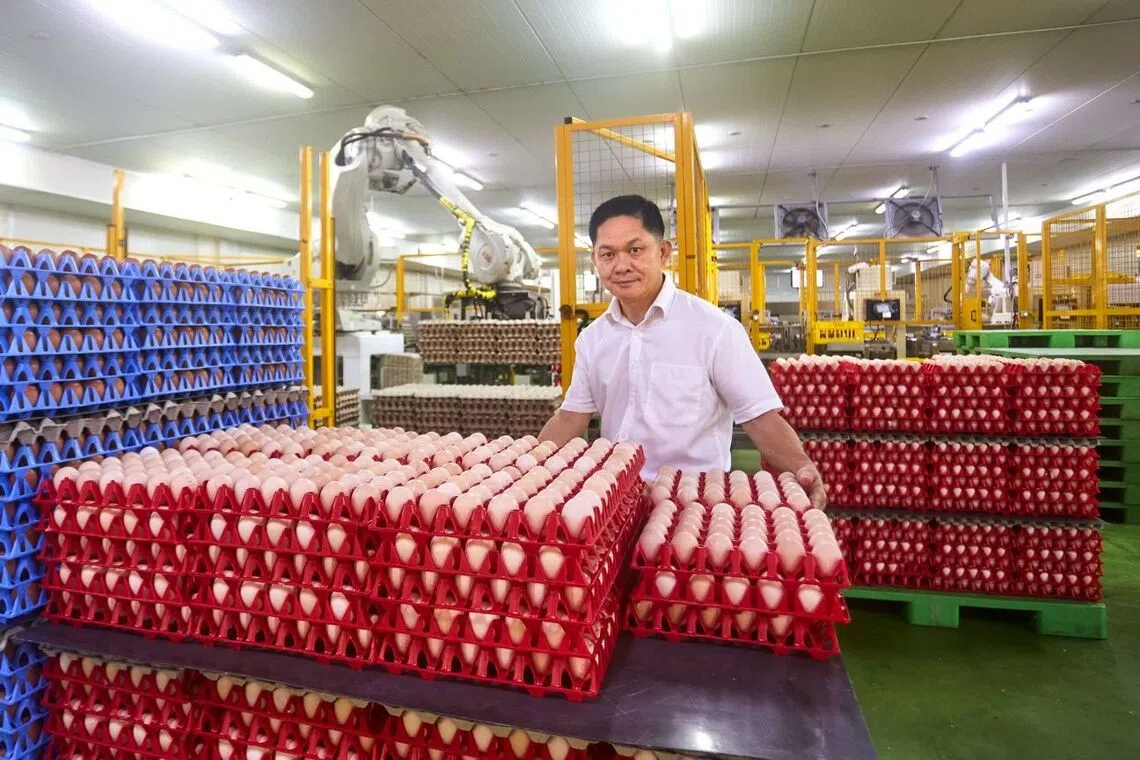
N&N can produce one million eggs a day at full capacity, says its chief executive officer Ma Chin Chew.
PHOTO: N&N
Spanning 11.6ha, N&N is one of three local egg farms in Singapore. It produces about 800,000 eggs daily, most of which go to clients such as McDonald’s and Subway.
Its pasteurised eggs, sold under the Egg Story brand, are also available at major supermarkets. Beyond retail and food service supply, the company also produces pasteurised liquid egg whites and marinated soft yolk eggs.
Automation helps Mr Ma’s team collect the 800,000 eggs daily with fewer than 10 workers on the packing line. Sensors and X-ray detectors identify cracks, sort the eggs by weight and grade, and flag any defects – before 87 delivery staff fan out to stock supermarket shelves by lunchtime.

Beyond fresh eggs, N&N also produces pasteurised liquid egg whites and marinated soft yolk egg products.
PHOTO: N&N
While local eggs cost slightly more than imports, Mr Ma, who’s the chief executive officer of N&N, says consumers value freshness, since local eggs go from farm to supermarket within hours.
A commitment to safe, high-quality eggs led him to invest $14 million in 2010 in a patented technology that pasteurises eggs in a hot-water bath without cooking them – the first and only such system in Singapore. Mr Ma estimates that the method now treats about 100,000 eggs every day under the Egg Story brand.
“Eggs are porous, so bacteria like salmonella can easily enter,” he explains. “We wanted to eliminate that risk without using chemicals. As producers, we must ensure eggs are safe for consumers.”
Mr Ma credits the SFA’s funding and guidance for helping his farm grow. “Government support gives us the confidence to innovate,” he says. Ultimately, he hopes consumers appreciate the effort behind every egg. “They may be cheap, but each one represents the hard work of hens, farmers, drivers and retailers,” he adds.

A fourth-generation vegetable farmer, Dave Huang began experimenting with greenhouse systems in 2015 to modernise his family’s farming roots.

